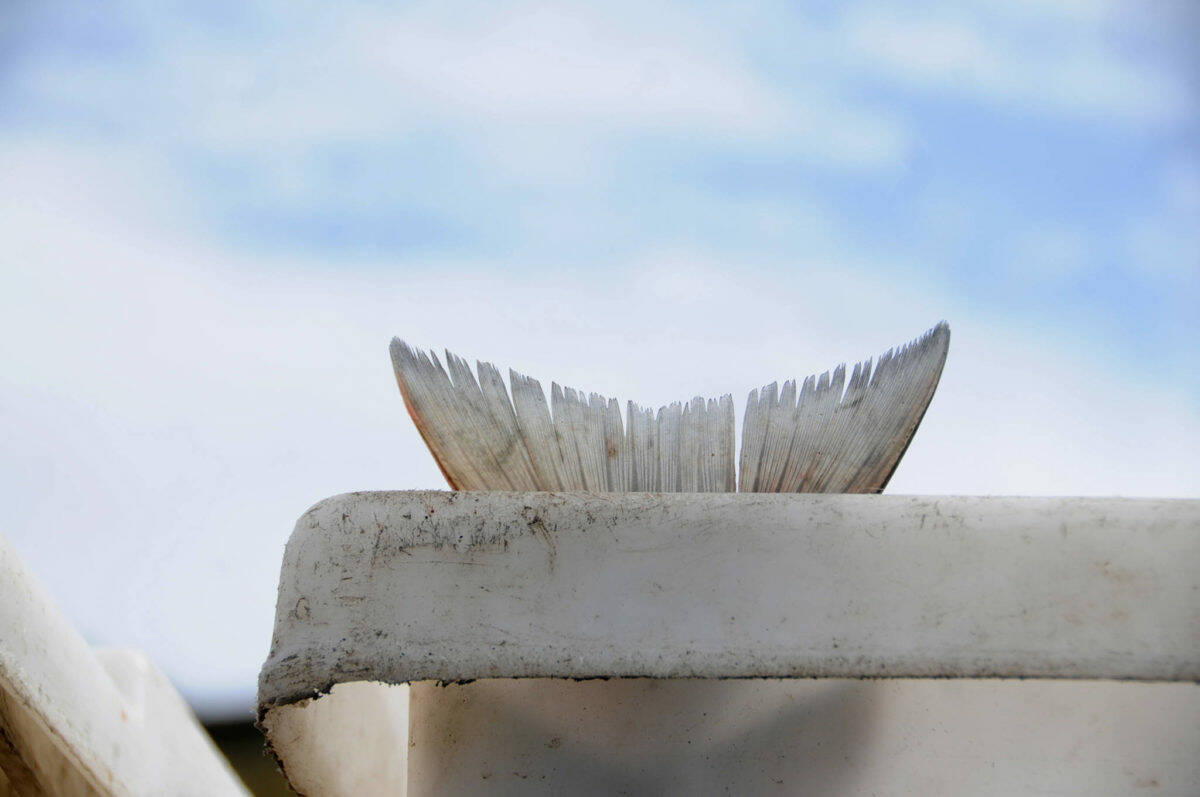The Kenai Peninsula Borough Assembly is asking Gov. Mike Dunleavy to issue an economic disaster declaration for the east side setnet fishery in Upper Cook Inlet in response to state regulations that have limited how long fishers can be on the water.
The Alaska Department of Fish and Game’s Division of Commercial Fisheries this summer closed the Kenai River drainage to king salmon fishing due to low king counts. That closure triggered the concurrent closure of the set gillnet fishery in the Upper Subdistrict of Cook Inlet, including the Kenai, Kasilof and East Foreland sections.
The Kenai River Late-Run King Management Plan says that the Alaska Department of Fish and Game must close the commercial set gillnet fishery in the Upper Subdistrict if the projected late-run large king salmon escapement is less than 15,000 fish, the order says. As of July 15, when the closure was announced, the Kenai River late-run large king salmon passage was estimated to be 2,352.
The resolution approved by assembly members Tuesday was introduced by Assembly President Brent Johnson, who is an east side setnetter. Johnson said during Tuesday’s meeting of the Legislative Committee that he was asked by the Kenai Peninsula Fishermen’s Association to write a resolution asking for the disaster declaration.
“The 2022 season for setnetters on the east side was horrendously bad,” Johnson said. “ … The 2021 season was pretty doggone bad.”
Kenai Peninsula Borough Attorney Sean Kelley told assembly members during Tuesday’s committee meeting that, as an east side setnetter, Johnson stands to benefit financially from the legislation and therefore should not participate in debate or vote on the issue. Johnson is still allowed, Kelley said, to sponsor the resolution.
Assembly Vice President Tyson Cox and member Jesse Bjorkman signed on Tuesday as co-sponsors.
The total harvest of sockeye salmon by the east side setnet fishery this year was 84% below the recent 10-year average. That’s according to the 2022 Upper Cook Inlet Commercial Salmon Fishery Season Summary, published by the Alaska Department of Fish and Game last week.
The same summary says that the Kenai and East Foreland sections were open on two days between July 11 and July 14. During that time, the east side setnet fishery harvested just over 23,000 sockeye salmon, which is 92% under the most recent 10-year average.
Per the resolution passed Tuesday, this year’s gross exvessel value for the east side setnet fishery was just under $960,000. That’s about 90% less than the most recent five-year average of just over $9 million.
“The extremely low harvest and low exvessel values are below the level necessary to cover the cost of operating and maintaining commercial set net, processing and marketing businesses in the Kenai Peninsula Borough,” the resolution says.
Alaska Department of Fish & Game Commissioner Doug Vincent-Lang told setnetters during a public meeting hosted by the Kenai Peninsula Fishermen’s Association in August that they should take any concerns they have over fishery closures to the Alaska Board of Fisheries.
The Kenai Peninsula’s state legislative delegation also authored a letter asking Kenai Peninsula Borough Mayor Mike Navarre to support the legislation. The letter is signed by Sens. Peter Micciche and Gary Stevens, as well as Reps. Ben Carpenter and Sarah Vance. That’s in addition to Sen.-elect Jesse Bjorkman and Rep.-elect Justin Ruffridge.
“The residents who work tirelessly in this fishery continue to struggle financially, even on good years. The impacts felt by all during the 2021 and 2022 seasons are more that many can bear.”
Tuesday’s assembly meeting can be streamed on the Kenai Peninsula Borough’s website at kpb.us.
Reach reporter Ashlyn O’Hara at ashlyn.ohara@peninsulaclarion.com.

